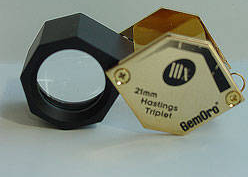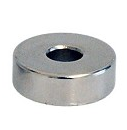A news item drifted into my in-box confirming what many of us already knew: the price of silver is forecast to rise in 2012 and will likely top a whopping $40 an ounce before the end of the year.
The “World Silver Survey 2012” was performed by Thomson Reuters.
The implications for the trade and for our own pearl and bead stringing niche are obvious. Many of us who routinely used 14 karat gold in our designs shifted away from the precious metal when it began its inexorable climb a few years ago. Back then, in 2009, silver at $14.67 an ounce was our fall-back. Now with costs moving up, we are seeing firms produce steel, tungsten and new metal alloys to ease price pressure on manufacturers and the end-user.
It’s a testament to the creativity in our niche that we’re seeing so many pearl and bead stringers begin to learn new techniques, such as macramé and kumihimo, as substitutes for clasps and chains. (In the Advanced Pearl and Bead Stringing DVD, I teach a macramé technique I developed years ago as a substitute for clasps.)
However, there are times that you absolutely need to know if what you have is gold or silver. And, unfortunately, there are dealers who will mislead you about the content of precious metals in their findings and other finished goods.
This means you’ll have to learn about metal assays.
Metal Assays: A Three-step Process
Here, I’m not going to describe every assay test in detail. When you buy an assay kit, you’ll be supplied with detailed instructions on how to use it.
But I do want to give you a solid overview of common assays, what to expect and how to get started.
 First, get a jeweler’s loupe. Buy the 10X loupe, meaning you have a magnification of 10 times. This is the trade standard and used for everything from looking for hallmarks to grading gemstones.
First, get a jeweler’s loupe. Buy the 10X loupe, meaning you have a magnification of 10 times. This is the trade standard and used for everything from looking for hallmarks to grading gemstones.
Jewelers’ loupes are very inexpensive and well worth the price, usually under $20. Use it to look for hallmarks on the item you’re buying.
It goes without saying that you need to be familiar with the US hallmarking system. This isn’t complicated. Just read up on it.
It’s important to note that although metal is supposed to be hallmarked, it isn’t always and the omission is not always an attempt to deceive. You’ll sometimes see hallmarks missing on artisan or craft jewelry, for example, where the jeweler either forgot or didn’t own the stamp needed to mark the metal. In these circumstances, ask why there is no hallmark.
Nevertheless, if the hallmark is missing, it’s a red flag.
 The next step is to acquire a serious magnet. The best are called “rare earth” or Neodymium magnets and they’re available for about $10. Run the magnet over the items you’re testing. If a metal is attracted to the magnet it means it contains little or no precious metal. (If you want to sell your gold, most refiners will not accept metal that fails this preliminary test.)
The next step is to acquire a serious magnet. The best are called “rare earth” or Neodymium magnets and they’re available for about $10. Run the magnet over the items you’re testing. If a metal is attracted to the magnet it means it contains little or no precious metal. (If you want to sell your gold, most refiners will not accept metal that fails this preliminary test.)
The problem with the magnetic test is that gold plated and gold filled jewelry is NOT attracted to the magnet, so you will have to do further testing to determine higher karatage. And this leads to the third most commonly used assay test, the acid test.
These tests involve dropping a small amount of acid on the metal and watching to see how it reacts to the metal. Like the loupe and the magnet, the kits are also not expensive, most I’ve seen are under $20 and they will provide clear instructions on use.
The problem with acid tests, though, is that in most cases, you’ll want to test more than just the surface layer of metal. A good plated clasp might “read” as 14 karat gold, for example, if you just test the surface. So, to obtain an accurate reading on the metal, you’ll have to file it so the acid can test below the surface level. This means marring the metal. Sometimes this can be polished off, but sometimes it’s permanent.
If you work with precious metals, and as a pearl and bead stringer, you undoubtedly do, knowing how to protect yourself from fraud is critically important. Learning how to perform assay tests is an important means of preventing it.
I discontinued comments on the site because of the heavy amount of spam. To contact me, use the contact form and I’ll answer right away. If you have a legitimate criticism or complaint, I’ll print it. However, if you like this or any articles on the site, I’d appreciate a “like” at the top of the page.

